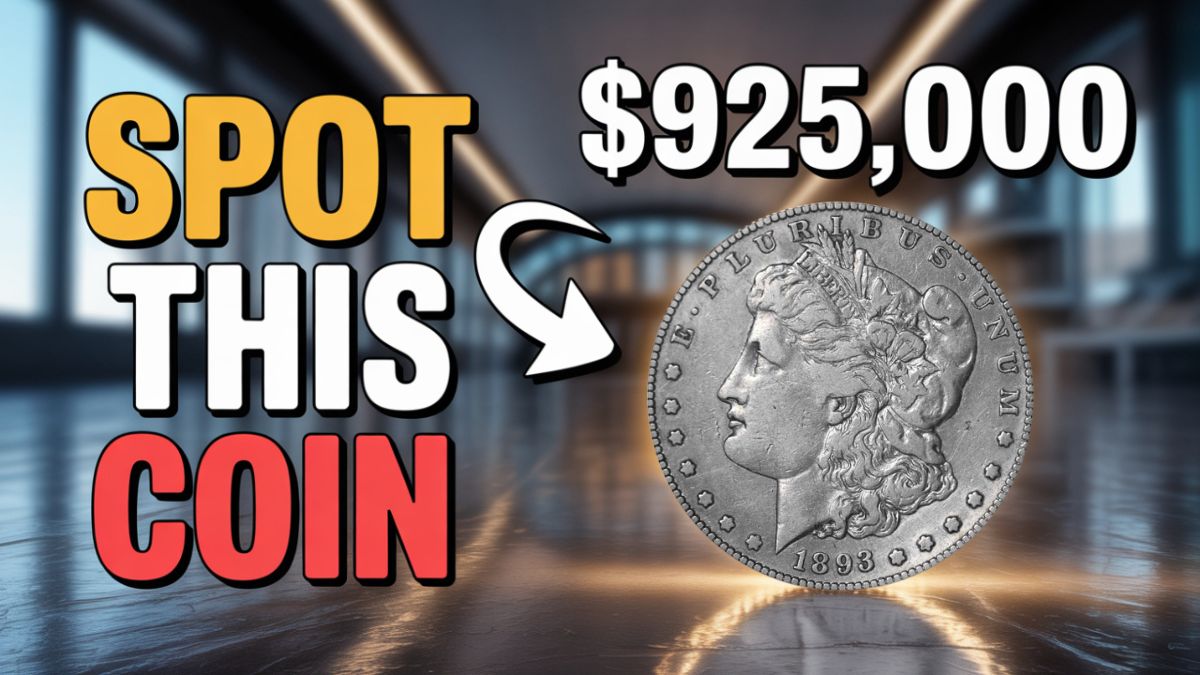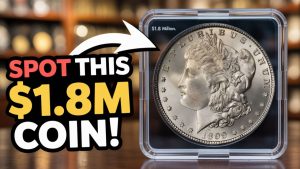Sometimes life brings forth stories that are beyond imagination. That’s what happened when a very special and rare coin was found in an ordinary place—and it was worth $925,000. It was not a gold or diamond coin, but a Buffalo Nickel, which people usually recognize as a five-cent coin. But the unique story of this coin has surprised not only coin collectors but also ordinary citizens. Imagine if a simple coin kept in your wallet turns out to be worth millions of dollars. Would you be able to recognize it?
Normal-looking coin, extraordinary value
This story begins in an ordinary grocery store in a small town in Ohio, where a customer found an old nickel coin in change that felt a little different. When the person looked closely, he noticed some special things in it—the design was clear, the edges were not very worn, and it had a strange charm. When the coin was shown to a numismatist out of curiosity, it was revealed to be a rare 1916 Buffalo Nickel—and one that had an overdate or minting error.
This was no small feat. A coin that had probably been in people’s hands a hundred times, spent in stores, and dropped into vending machines was now picked up by a collector and sold for $925,000 at a private auction.
The Buffalo Nickel: A Living Symbol of American History
The Buffalo Nickel, also known as the “Indian Head Nickel,” was first minted in 1913 and remained part of the U.S. currency until 1938. The coin is characterized by its design—a Native American chief on one side and a mighty bison on the other. The design not only symbolizes beauty, but it also tells the story of America’s history, culture, and its industrial and geographical expansion.
Several versions of this coin were issued between 1913 and 1938, but coins from certain years and mint locations are still considered extremely rare today. For example, the 1916-D, 1918/7-D overdate, and 1937-D three-legged Buffalo Nickel are still bought and sold at very high prices among collectors.
Why such a high price? What is special about this nickel?
Now the question arises, why is this coin so valuable? There are many factors that increase the price of this coin. The first reason is rarity. Some of the special Buffalo Nickels made in 1916 had minting errors or were made in very small numbers. In addition, over time most of the coins were worn, lost, or accidentally melted. But this coin is almost in mint state—that is, it is preserved as it was when it came out of the mint.
The second reason is overdate error. This means that a coin has been made by imprinting the new year’s date on the metal plate of the old year. This is a rare minting anomaly, which makes such coins extremely special.
The third reason is authenticity and grading. This coin was graded MS-65 or above by professional grading services like PCGS or NGC, which means that it had almost no scratches and all the design elements were present with complete clarity.
You may also have such a treasure.
It may seem strange to think, but the truth is that even today many such rare coins can be present in common circulation. Many of us put the coins in our pockets in the vending machine without looking or give them in exchange for the bill at a shop. But if you look a little carefully, then it is possible that you too may become a millionaire someday.
Experts believe there are thousands of these coins still circulating in the U.S. economy—especially those minted before 1940. These coins can fetch thousands to millions of dollars today because of their age and rarity.
How to Identify a Buffalo Nickel
If you want to check your coins now, pay attention to some of the signs below:
- Check the date—coins from 1913–1916 can be especially valuable. If the date is worn or not visible, it may be a version with a “missing date error.”
- Mint mark—There may be a D, S, or any other mint mark below “FIVE CENTS” on the reverse side of the coin. Coins from certain mints, such as Denver (D) or San Francisco (S), are more valuable.
- Check for errors—any specific minting error, such as a double die, off-center strike, or a three-legged bison (1937-D Three-legged), can increase the value manifold.
- Condition—A coin that is clean, less worn and has sharp edges is considered more valuable.
Growing curiosity among collectors
After this incident came to light, the level of curiosity among coin collectors has increased significantly. Many people are now searching for old coins at home, trying to find Buffalo Nickels in garage sales and antique shops. The prices of these coins are increasing day by day on online auction sites, and the demand for certified coins is at its peak.
Not only this, special workshops and events are also being planned for coin collectors in some cities, where people can get their coins checked and consult experts.
Final thoughts: The next great inventor may be you.
Real treasures are sometimes very close to us—we just need the eye to recognize them. The Buffalo Nickel, which had passed through thousands of hands and was being used as a common payment instrument, was finally recognized by a savvy individual—and that recognition made it worth $925,000.
So the next time you find an old coin in change, take a closer look. Maybe you’ll be lucky at that very moment. Because sometimes the treasure is not hidden in a safe but in your pocket.


